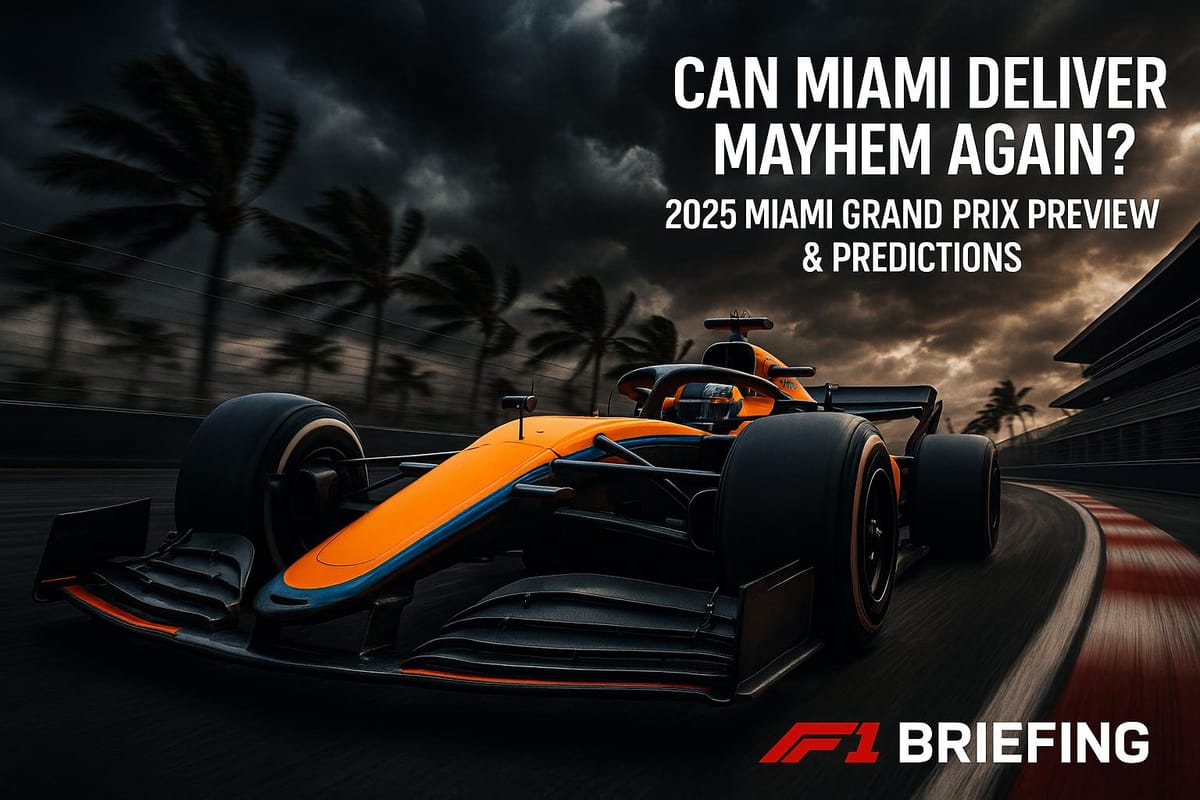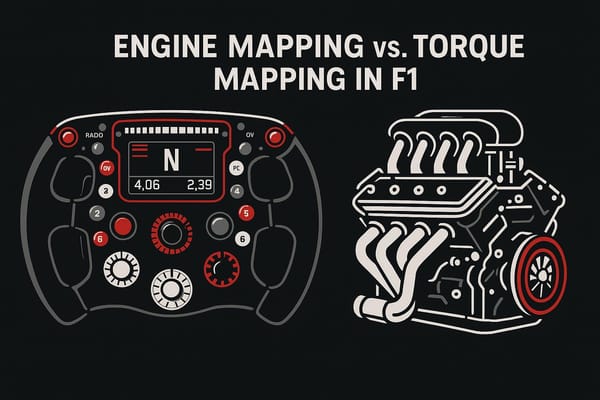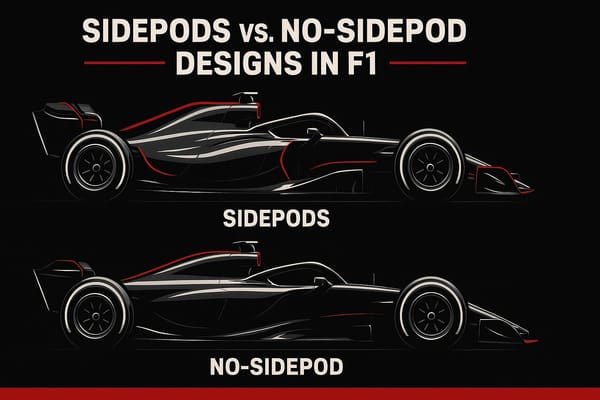Can Miami Deliver Mayhem Again? 2025 Miami Grand Prix Preview & Predictions
The 2025 Miami Grand Prix preview highlights McLaren's dominance, track challenges, unpredictable weather, and strategic tire management.

The 2025 Miami Grand Prix promises intense action, with McLaren dominating the season, unpredictable weather, and a track notorious for chaos. Key highlights:
- McLaren's dominance: Oscar Piastri leads the Drivers' Championship with 234 points, followed closely by teammate Lando Norris (226 points). McLaren also tops the Constructors’ standings with 460 points.
- Track challenges: Miami's 3.363-mile circuit, featuring 19 turns and three DRS zones, demands precision. The tricky Turns 12-15 and evolving track surface test drivers’ skills.
- Weather unpredictability: Florida's tropical climate often causes sudden rain, impacting strategies. In 2025’s sprint race, heavy rain led to Charles Leclerc crashing before the race began.
- Tire strategy: Pirelli’s softer compounds (C3, C4, C5) may push teams toward two-stop strategies due to high thermal degradation.
- Safety Car impact: A 67% chance of Safety Car deployment adds strategic complexity, with well-timed pit stops being crucial.
McLaren's Piastri and Norris are favorites, but Miami's history of surprises - no pole sitter has ever won here - keeps the competition wide open.
Our Predictions for the 2025 Miami Grand Prix
Miami International Autodrome Track Analysis
The Miami International Autodrome, nestled within the grounds of Hard Rock Stadium, presents drivers with a temporary yet demanding circuit. Measuring 5.412 km (3.363 miles) and boasting 19 turns, this track is designed to test precision while offering plenty of opportunities for overtaking.
Circuit Layout and Key Sections
The layout includes three DRS zones, carefully positioned to encourage overtaking. The main straight is a standout feature, allowing cars to reach speeds of up to 355 km/h when slipstreaming and DRS are in play. Lance Stroll hit this top speed during the 2024 race, showcasing the circuit's high-speed potential.
Turn 1 is a critical hotspot. After a 170-meter dash from the start line, drivers face a tight right-hander that demands late braking and serves as a prime overtaking zone.
The middle sector brings its own challenges, especially the Turns 6, 7, and 8 combination. Precision in braking is key here, as the exit leads directly to a long stretch ending at Turn 11 - another area ripe for overtaking. This corner wraps up the first major DRS straight and transitions into a left-hander, further enhancing passing opportunities.
The circuit's trickiest section lies in the Turns 13-16 sequence, a part of the track that Clive Bowen, director of Apex Circuit Design, describes as particularly unforgiving:
"The sequence from Turn 13 through to 16 is where we thread the needle under the Turnpike overpasses. Going into Turn 14, you don't see the apex of Turn 15 until you're on the apex of Turn 14. It's what we call a 'mistake generator' so the opportunity for drivers to gain position because somebody in front overdrives is quite high."
This area not only introduces the circuit's sole elevation changes but also demands razor-sharp focus from drivers. Even seasoned racers have been caught out here.
Yuki Tsunoda summed up the challenge of this section, saying:
"Sector 3 is what I call a 'Formula E sector' with a lot of very tight corners and I think overall it looks like being quite an interesting track to drive. I think it will be fun, although overtaking might be difficult, so we must qualify well."
In the 2024 race, 93 overtakes were completed over the weekend, proving that the track does offer plenty of opportunities to make moves. However, the smooth surface of the circuit can lead to rear sliding and tire overheating, complicating race strategies. These challenges are further heightened by Miami's extreme weather conditions.
Weather and Track Conditions
Miami's subtropical climate adds another layer of complexity to racing here. With track temperatures often exceeding 55°C (131°F), the heat puts immense thermal stress on both tires and drivers. On average, race-day track temperatures hover around 38°C (100°F), but the combination of heat and humidity pushes driver endurance to its limits.
Sergio Perez highlighted the strategic challenges posed by these conditions:
"I found the new circuit fun on the simulator and it can potentially be a good place for racing with those very long straights. I think choosing the right downforce level will be the biggest challenge for all the teams."
Teams must strike a delicate balance: opting for low-drag setups to maximize straight-line speed while ensuring enough downforce for the tight, technical sections. The resurfacing of the track in 2023 improved mechanical grip, but the smooth surface continues to challenge drivers with tire overheating and rear-end instability. As the weekend progresses, rubber build-up alters grip levels, requiring constant adjustments to car setups.
For 2025, Pirelli has introduced softer tire compounds (C3, C4, C5) compared to previous years' allocations of C2, C3, and C4. This shift, paired with the intense heat, is expected to make two-stop strategies more common, replacing the one-stop approach seen in prior years. Pirelli has emphasized the difficulty ahead:
"Thermal degradation will be a major factor, as temperatures are expected to be very high, given that last year's track temperature exceeded 55 °C."
Safety Car Data and Incident Patterns
The Miami circuit's technical nature and unpredictable weather make it prone to race disruptions. The track has a 67% likelihood of seeing Safety Car or Virtual Safety Car deployments, making flexible race strategies essential.
Recent races have seen frequent Safety Car periods, Virtual Safety Car deployments, and penalties for unsafe releases and collisions. These disruptions underline the importance of precise pit strategies, especially given the 19.9-second pit stop time loss (including 2.5 seconds stationary). Aggressive pit strategies must be carefully managed to avoid costly mistakes.
Weather often adds to the chaos. Sudden rain can trigger additional Safety Car periods, compressing the field and creating dramatic position changes. The combination of Miami's intense heat, tricky layout, and aggressive racing often leads to incidents that can significantly alter race outcomes. This unpredictability has cemented Miami's reputation as a venue where anything can happen, setting the stage for another thrilling race in 2025.
2025 Team and Driver Performance Analysis
As the Miami Grand Prix approaches, all eyes are on how teams and drivers will handle the intense competition and unpredictable conditions. The 2025 season has already shaken up the standings, setting the stage for what promises to be a high-stakes clash.
Championship Standings Update
McLaren has taken a commanding lead in the Constructors' Championship with 460 points, leaving Ferrari far behind with 222 points. In the Drivers' Championship, Oscar Piastri leads with 234 points, closely followed by teammate Lando Norris with 226 points. Red Bull, once dominant, now sits fourth in the Constructors' standings with 172 points, while Max Verstappen holds third in the Drivers' Championship with 165 points, trailing Piastri by 69 points. Mercedes' George Russell, with 147 points and one win under his belt, is in fourth place, while rookie Kimi Antonelli has managed to gather 63 points in his debut season. Ferrari's duo of Charles Leclerc (119 points) and Lewis Hamilton (103 points) have kept the team competitive, solidifying their position as the second-strongest constructor.
| Position | Driver | Team | Points | Wins | Poles |
|---|---|---|---|---|---|
| 1 | Oscar Piastri | McLaren | 234 | 5 | 4 |
| 2 | Lando Norris | McLaren | 226 | 4 | 3 |
| 3 | Max Verstappen | Red Bull | 165 | – | – |
| 4 | George Russell | Mercedes | 147 | 1 | 1 |
| 5 | Charles Leclerc | Ferrari | 119 | – | – |
| 6 | Lewis Hamilton | Ferrari | 103 | – | – |
Top Contenders for Victory
Oscar Piastri heads into Miami as the driver to beat, boasting five wins and four pole positions this season. Just eight points behind, Lando Norris is keeping the pressure on with his own tally of four victories and three poles. Piastri's ability to manage tire wear in Miami's sweltering heat gives him a strong edge, but Norris has proven to be a fierce competitor.
Max Verstappen, despite a challenging season, remains a potential threat. Red Bull's struggles with car setup have held them back, but Verstappen's experience could make a difference if the team finds the right balance for Miami's unique conditions. George Russell, with one win and a pole, is another strong contender, while Ferrari's Charles Leclerc and Lewis Hamilton will be looking to capitalize on any strategic openings, especially during potential Safety Car periods.
Midfield Opportunities
While the top teams battle it out, the midfield is poised to take advantage of Miami's unpredictable nature. Williams' Alexander Albon has been a standout performer, collecting 46 points so far. Reflecting on his progress, Albon said:
"I'm glad I could reset and go again after yesterday! The car was quick and today was all about pure pace... To be battling with the top teams, I can hardly believe it to be honest, when you look at where we were 12 months ago. This shows all the progress we've made at Grove and now we've shown the world that we can race at the top."
Williams currently holds fifth in the Constructors' standings with 59 points. Over at Sauber, Nico Hulkenberg, ninth in the Drivers' Championship with 37 points, shared his optimism:
"However, it feels like we've taken another step forward this weekend. With a bit more performance and improved car balance, we believe we can get closer to fighting for points."
Haas' Esteban Ocon, leading his team with 23 points, acknowledged the challenges they face in closing the gap to the frontrunners:
"It was a solid race on our side but unfortunately, we lacked a bit of pace to be fighting with the quicker guys in front... I think overall it's been a strong weekend from the team and we need to keep that going once we find a bit more performance in the car."
Aston Martin and Racing Bulls are also locked in the midfield battle, each with 36 points. Fernando Alonso, reflecting on Aston Martin's struggles, remarked:
"Difficult race for us today and very tricky conditions, as we expected. We just simply lack pace - we've been slow all season so far and today wasn't any exception."
With a 67% chance of a Safety Car appearance, midfield teams could seize opportunities created by errors or missteps from the leaders. Miami's unpredictable nature might just turn the tide for these teams, making it a race full of surprises.
Race Strategy: Tires, Pit Stops, and Variables
The 2025 Miami Grand Prix is gearing up to challenge the traditional one-stop race strategy. With softer Pirelli tires in play, teams must juggle tire management, track position, and Miami's unpredictable conditions. This unique mix makes tire choices, pit windows, and weather-driven decisions pivotal.
Tire Compound Strategy
Pirelli's decision to bring softer tire compounds - C3 (Hard), C4 (Medium), and C5 (Soft) - could push teams toward a two-stop strategy. As Pirelli noted:
"It will be interesting to see if this year's softer compounds will open the door to a two-stop strategy."
The Miami International Autodrome’s smooth surface subjects tires to moderate forces and thermal wear, requiring careful management. Historically, teams have leaned on conservative strategies. For example, in 2024, 15 of 20 drivers started on medium tires before switching to hards, minimizing risks when performance differences were marginal. But the softer compounds for 2025 are expected to amplify those differences, potentially rewarding more aggressive tactics. As grip levels evolve throughout the weekend, managing tires becomes even trickier.
Pit Stop Windows and Safety Car Impact
Safety Car periods often redefine pit stop strategies, as they reduce the usual 19.9-second pit stop loss (including 2.5 seconds stationary). Teams use these moments to gain track position, and past races have shown how well-timed stops during Safety Car phases can completely shift the leaderboard.
Many teams reserve hard tires as a safeguard for such scenarios, while Virtual Safety Car periods offer similar opportunities. Miami’s straightforward pit lane design adds to the importance of timing. Teams must weigh the risks of early stops against maintaining track position, making precise calculations essential.
Weather Impact Scenarios
Weather is another unpredictable variable that can turn strategies on their head. Miami’s tropical conditions, with high heat and humidity, push drivers and equipment to their limits. Sudden thunderstorms, a common occurrence, can force rapid strategic shifts.
Mario Isola of Pirelli highlighted the complexities of weather-driven decisions:
"If we have a drying track but still a chance of rain, obviously they have to consider an additional pitstop to fit another set of intermediate tyres."
Under dry conditions, thermal degradation becomes a key factor:
"Thermal degradation will be a major factor, as temperatures are expected to be very high, given that last year's track temperature exceeded 55°C."
Rain introduces even more chaos. Intermediate tires wear quickly on drying tracks, requiring teams to constantly monitor weather radars and prepare for additional pit stops. The 2023 Miami Grand Prix ran without Safety Car interruptions, but the 2024 race showed how weather-related cautions can drastically alter the race dynamics.
With softer tires, frequent Safety Car interventions, and Miami’s unpredictable weather, this year’s race promises a whirlwind of strategy shifts. It’s this blend of variables that makes the Miami Grand Prix a thrilling spectacle year after year.
Race Predictions and Key Factors
The 2025 Miami Grand Prix is shaping up to be a thrilling and unpredictable event. With McLaren riding high, Red Bull facing challenges, and Miami's reputation for chaos, this year's race could be one for the books.
Podium Predictions and Surprise Contenders
McLaren heads into the race as the team to beat. Their recent performances at the Miami International Autodrome speak volumes, with back-to-back victories in 2024 and 2025. Lando Norris clinched the win in 2024, while Oscar Piastri topped the podium in 2025, securing a McLaren 1-2 finish that showcased their mastery of the circuit's unique demands. Both drivers have proven they can handle Miami's tricky conditions, making them strong bets for another podium finish.
Max Verstappen, on the other hand, has struggled to maintain his earlier dominance in Miami. While he claimed victories in the first two Miami races in 2022 and 2023, his 2025 performance fell short, with a fourth-place finish and a candid admission that the race was "a bit of a struggle". Red Bull seems to have lost some of its edge at this venue.
Meanwhile, George Russell has emerged as a serious contender. His third-place finish in 2025 signals that Mercedes has found a competitive rhythm on this track. With the right strategy, Russell could capitalize on any mistakes from his rivals and secure a spot on the podium.
Adding to the drama is Miami's peculiar trend: no pole sitter has ever won the Grand Prix. This quirk opens the door for drivers starting further back, emphasizing the importance of racecraft and strategy over pure qualifying speed.
Statistical Analysis and Trends
Miami's brief but eventful history reveals clear shifts in dominance. Red Bull ruled the first two races in 2022 and 2023, while McLaren has taken control in 2024 and 2025.
| Year | Winner | Constructor | Starting Position |
|---|---|---|---|
| 2022 | Max Verstappen | Red Bull | Not pole |
| 2023 | Max Verstappen | Red Bull | Not pole |
| 2024 | Lando Norris | McLaren | Not pole |
| 2025 | Oscar Piastri | McLaren | Not pole |
Safety Car periods are another key factor, often shaking up the race order. Teams with quick decision-making and adaptable pit strategies, like McLaren, have an advantage in these scenarios. The stats back this up - 93 overtakes and an average 19.9-second pit stop loss underscore that success in Miami depends more on race pace and strategy than qualifying position.
Critical Race Variables
Several race-day factors could heavily influence the outcome in Miami:
- Weather: Florida's unpredictable climate, with the potential for sudden rainstorms, can force teams to make snap decisions. A well-timed switch to wet tires could make or break a race.
- Safety Car Deployments: These caution periods can dramatically shift the field, offering opportunities for clever pit strategies and position gains.
- Tire Management: Balancing speed with tire preservation is crucial on this track. Teams must adapt to degradation and changing conditions to stay competitive.
- Track Evolution: Miami's temporary circuit changes significantly over the weekend as rubber builds up, increasing grip levels. This evolving surface can favor different teams and drivers as the race progresses.
All these variables make Miami a true wildcard in the Formula 1 calendar. While McLaren's recent dominance suggests they are best equipped to handle the chaos, Miami has a way of delivering surprises when the lights go out.
Conclusion: Miami's 2025 Chaos Potential
The 2025 Miami Grand Prix is shaping up to be another rollercoaster of unpredictability. With a strong likelihood of Safety Car interruptions and scorching track temperatures, the event promises to test drivers and teams with intense tire management and strategic maneuvering. These challenges mirror the season's broader theme of tactical twists and surprises.
The race's unpredictability was on full display in 2025, marking the first time four different drivers claimed the top spot in Sprint Qualifying, the Sprint, main Qualifying, and the Race. The circuit's evolving grip levels, as it rubbers in, create ample opportunities for overtaking and shakeups in the running order.
Adding to the chaos, Miami's infamous weather played a starring role. A sudden downpour during the Sprint session caused Charles Leclerc to crash before the action even began. With Florida's volatile climate, thunderstorms remain a constant threat, forcing teams to remain on their toes as conditions can shift dramatically in moments.
Drivers have openly acknowledged the circuit's challenges. Lando Norris reflected on the unpredictable nature of the race, saying:
"My luck in Miami seems pretty good at the minute so I'm happy. The pace was still very good. It's always just difficult, these races, you never know when to box."
Pirelli's choice to bring softer tire compounds (C3, C4, and C5) to Miami added another layer of complexity. The combination of high heat and rapid tire degradation made pit stop timing critical, with even small errors carrying significant consequences. These elements perfectly align with the season's evolving dynamics, cementing Miami's reputation as a unique and thrilling battleground in Formula 1.
The 2025 Miami Grand Prix promises to deliver another electrifying chapter in the sport's history, blending driver skill, team strategy, and ever-changing conditions into a spectacle that fans won't soon forget.
FAQs
How is McLaren’s dominance in the 2025 season shaping their strategy for the Miami Grand Prix?
McLaren’s impressive form in the 2025 season has set the stage for them to take a bold but calculated approach at the Miami Grand Prix. Thanks to their standout aerodynamics, sharp tire management, and competitive race pace, they’re in a prime position to tackle the circuit’s unique mix of high-speed straights and tight, technical corners.
The team’s strategy will likely center around maintaining steady performance while seizing chances to outsmart their competitors. By doing so, they can secure maximum points and solidify their lead in the championship standings. This strong momentum gives McLaren the confidence to strike the perfect balance between aggressive tactics and precise execution, keeping them firmly ahead of the pack.
How does Miami’s unpredictable weather influence race strategies and results?
Miami’s ever-changing weather, with its sudden downpours and occasional lightning, adds a unique twist to race strategies. Teams must think on their feet, making quick calls about tire choices, pit stop timing, and overall race pace. These rapid decisions can lead to thrilling comebacks - or costly errors.
Unpredictable weather can also lead to delays or safety concerns, shaking up the rhythm of the race. Success often hinges on how well drivers and teams adapt to these curveballs, making Miami a true battleground for strategic brilliance.
Why could softer tire compounds lead to more two-stop strategies at the 2025 Miami Grand Prix?
Softer tire compounds provide excellent grip and quicker lap times right out of the gate, but they wear out faster. This often nudges teams toward two-stop strategies to keep performance levels high throughout the race. The trade-off? More pit stops to avoid a drop in pace.
In Miami's sweltering heat and sticky humidity, tire management becomes even more crucial. Teams will need to carefully weigh the benefits of the speedier, yet less durable, soft tires against the timing of their pit stops. For many, a two-stop approach could be the smartest way to stay competitive.




